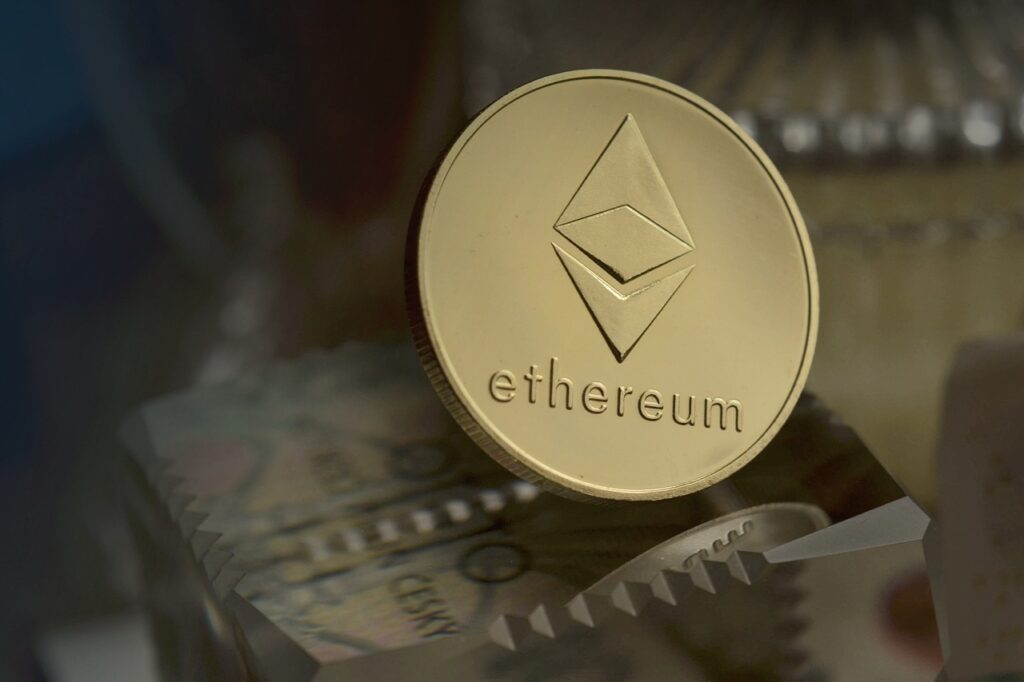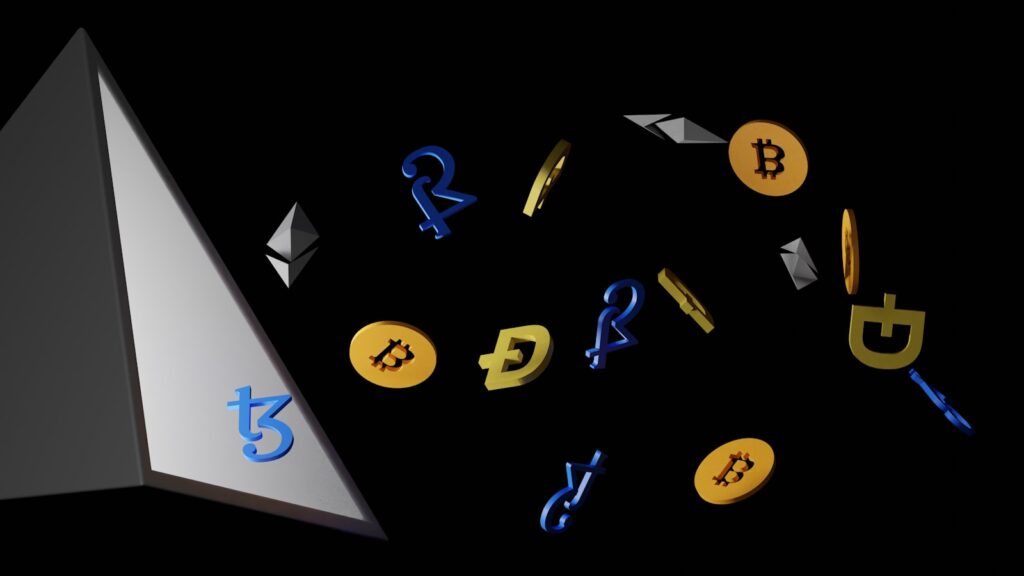Main Points :
- India’s Evolving Crypto Regulation: India is rethinking its strict stance on cryptocurrencies by studying global trends, especially those in the United States, and may soon adopt a more accommodating regulatory framework.
- Major Crypto Theft Incident: A high-profile theft involving roughly 10 billion yen of digital assets from a cryptocurrency exchange has underscored the critical need for advanced security measures.
- Ethereum’s Price Slump and Upgrade Hope: Despite recent price stagnation caused by network congestion and rising fees, Ethereum’s upcoming “Merge” upgrade promises significant improvements that could spark a market rebound.
- Broader Blockchain Developments: Alongside these events, the global blockchain scene continues to evolve, with new digital assets, decentralized finance (DeFi) innovations, and practical blockchain applications offering fresh revenue streams and enhanced utility for users.
I. India’s Shifting Approach to Cryptocurrency Regulation
In recent months, India has signaled a potential turnaround in its regulatory approach toward cryptocurrencies. Traditionally known for its cautious and sometimes restrictive policies, the Indian government is now reportedly reviewing its stance on digital assets. Inspired by developments in the United States and other major economies, policymakers in New Delhi are considering a framework that may facilitate a more innovation-friendly environment.
A. Learning from Global Trends
For years, the Indian government maintained a stringent position on cryptocurrencies, often citing concerns over fraud, money laundering, and economic instability. However, as prominent nations—most notably the United States—work to establish clear regulatory guidelines, India appears to be re-examining its position. Recent reports from reputable news agencies, including Reuters, indicate that the Indian authorities are carefully monitoring international regulatory strategies. The possibility of easing restrictions could stimulate a surge in crypto adoption, particularly in a country with a large, tech-savvy, and youthful population.
B. Potential Impact on the Global Market
A friendlier regulatory stance in India could have far-reaching implications for the global cryptocurrency market. With over 1.3 billion people, India represents a vast untapped market for digital assets. Should the government implement regulations that encourage innovation while still safeguarding consumer interests, we could witness an influx of new users and investments. This potential regulatory pivot may also serve as a model for other emerging markets, signaling a broader acceptance and integration of blockchain technology worldwide.
C. Recent Developments and Expert Opinions
Industry experts have pointed out that a balanced regulatory framework could drive economic growth by fostering technological innovation. Some recent articles on leading blockchain news websites have highlighted the potential benefits of regulatory clarity, including increased investor confidence and enhanced security protocols. If India manages to strike the right balance, it could become a hotbed for new crypto startups and a major player in the global digital economy.
II. The 10-Billion-Yen Crypto Theft: A Wake-Up Call for Security
A major incident that has rattled the cryptocurrency world is the theft of digital assets valued at around 10 billion yen from a well-known exchange. This theft, attributed to a 22-year-old suspect who is now reportedly on the run, underscores the vulnerabilities inherent in the digital asset space.
A. Details of the Theft
The theft occurred when the suspect allegedly breached the security system of a cryptocurrency exchange, extracting a staggering sum of digital currency. Although the exact amount may vary with market fluctuations, the incident is estimated to involve assets worth approximately 10 billion yen. Authorities have since issued an international warrant for the suspect’s arrest, as there is strong evidence to suggest that the culprit fled the country immediately following the breach.
B. Security Implications for Crypto Exchanges
This alarming event has sparked renewed discussions about the importance of robust security measures within the crypto ecosystem. Digital assets are inherently vulnerable due to their nature as purely digital data, making them prime targets for cybercriminals. In response to this incident, many exchanges have already begun enhancing their security protocols by investing in advanced encryption technologies, multi-factor authentication systems, and regular security audits. The theft serves as a stark reminder that while blockchain technology is revolutionary, the surrounding infrastructure must evolve continuously to fend off sophisticated cyber threats.
C. Broader Industry Reaction
The crypto community’s response has been swift and decisive. Several industry leaders have called for increased cooperation between exchanges and regulatory bodies to develop uniform security standards. Additionally, there is a growing consensus that regular stress tests and real-time monitoring systems should be standard practice across all platforms. This incident, while disconcerting, may ultimately pave the way for improved security practices and a more resilient digital asset ecosystem.
III. Ethereum’s Price Slump and the Anticipated “Merge” Upgrade
Ethereum, the world’s second-largest cryptocurrency by market capitalization, has faced significant price challenges recently. Its value has been impacted by a confluence of factors, ranging from intense network congestion and soaring transaction fees to competition from newer blockchain platforms that offer faster and cheaper transactions.

A. Causes of the Price Decline
One of the primary reasons for Ethereum’s price slump is the increasing competition from other blockchains such as Solana and Avalanche. These platforms have gained popularity by providing higher throughput and lower fees, which are critical for decentralized finance (DeFi) applications and other blockchain use cases. Moreover, the network congestion on Ethereum has led to exorbitant gas fees, making it less attractive for smaller transactions and everyday users. These challenges have culminated in a stagnation of price growth, even as the broader crypto market shows signs of dynamism.
B. The Promise of the “Merge”
Amidst these challenges, Ethereum enthusiasts remain hopeful about the upcoming “Merge” upgrade. Scheduled for implementation in September, this ambitious upgrade involves transitioning Ethereum from a Proof-of-Work (PoW) to a Proof-of-Stake (PoS) consensus mechanism. The “Merge” is expected to address several of the platform’s current issues, including high energy consumption, scalability bottlenecks, and costly transaction fees. By moving to PoS, Ethereum aims to not only reduce its environmental impact but also improve its processing capabilities, thereby creating a more user-friendly and sustainable ecosystem.
C. Expert Analysis and Future Projections
Financial analysts and blockchain experts predict that if the “Merge” is executed successfully, Ethereum’s market performance could see a significant turnaround. Recent articles from reputable financial news outlets have noted that such a major network overhaul could restore investor confidence, attract new developers, and ultimately lead to a price rebound. Furthermore, the upgrade is expected to set a precedent for other blockchain networks, highlighting the potential for technological innovation to overcome market challenges. The “Merge” is not just a technical update—it represents a critical juncture in Ethereum’s evolution, one that could redefine its role in the rapidly evolving digital economy.
IV. Broader Trends and Practical Applications in Blockchain
Beyond these headline events, the broader blockchain landscape continues to undergo rapid transformation. New crypto assets, innovative DeFi protocols, and practical blockchain applications are emerging, offering promising revenue streams and new utilities for users across the globe.
A. Emerging Digital Assets and Revenue Opportunities
The cryptocurrency market is witnessing the rise of several new digital assets that promise not only diversification but also novel functionalities. Investors looking for the next income source have a wealth of opportunities in areas like non-fungible tokens (NFTs), decentralized finance (DeFi), and blockchain-based gaming. Platforms are continuously emerging that leverage smart contracts to create decentralized marketplaces, lending systems, and even insurance products. These innovations are expanding the use cases for blockchain technology far beyond mere value transfer, opening up new avenues for both individual and institutional investors.
B. Real-World Blockchain Applications
Blockchain technology is increasingly finding practical applications across various industries. For example, supply chain management is being revolutionized through enhanced transparency and traceability, allowing companies to monitor products from production to delivery. In the financial sector, blockchain is streamlining cross-border payments and reducing transaction times dramatically. Healthcare is another domain where blockchain is making inroads, particularly in ensuring the secure sharing of medical records. These applications not only demonstrate the versatility of blockchain technology but also underscore its potential to improve efficiency and security in traditional business practices.
C. Industry Collaborations and Innovations
Recent collaborations between blockchain startups and established corporations highlight the growing acceptance of distributed ledger technology (DLT). Major tech companies and financial institutions are investing in blockchain research and pilot projects, aiming to harness its potential for real-world applications. Innovations such as Layer 2 scaling solutions and cross-chain interoperability protocols are becoming common, addressing previous limitations of blockchain networks. These developments are setting the stage for a more integrated digital economy, where blockchain technology plays a central role in ensuring transparency, security, and efficiency.
V. Looking Ahead: The Future of Cryptocurrency and Blockchain
The events detailed above—from India’s potential regulatory shift and a high-profile crypto theft to Ethereum’s transformative upgrade—illustrate the dynamic and sometimes turbulent nature of the cryptocurrency world. As regulators, developers, and investors continue to navigate these challenges, several key trends are likely to shape the future of digital assets and blockchain technology.
A. Regulatory Maturation and Global Collaboration
As governments around the world, including India, refine their approaches to cryptocurrency regulation, the likelihood of a globally coherent framework increases. Enhanced regulatory clarity can help mitigate risks, protect consumers, and foster innovation. International collaboration among regulators is also on the rise, which could lead to standardized security protocols and cross-border legal frameworks for digital assets.
B. Technological Innovation and Market Resilience
Technological advancements, such as Ethereum’s “Merge” and other scalability solutions, promise to address current inefficiencies and improve overall market resilience. As blockchain networks become more efficient and secure, investor confidence is expected to rise, potentially leading to a new wave of market growth. Innovations in decentralized applications (dApps), Layer 2 solutions, and interoperability protocols will likely continue to drive the evolution of the digital asset ecosystem.
C. The Role of Security in Shaping the Ecosystem
The 10-billion-yen theft has served as a critical reminder that security must remain a top priority. As cyber threats evolve, the industry’s response—through improved encryption, multi-layered security measures, and industry-wide standards—will be essential in maintaining trust in digital assets. This renewed focus on security is likely to spur further investments in cybersecurity research and development, benefiting not only cryptocurrency exchanges but also the broader blockchain industry.
D. Opportunities for Investors and Entrepreneurs
For those in search of new crypto assets or additional revenue streams, the ongoing developments in blockchain technology offer myriad opportunities. From decentralized finance to blockchain-powered supply chain solutions, the potential for innovation and profit is immense. Entrepreneurs and investors alike are encouraged to stay abreast of regulatory changes, technological breakthroughs, and market dynamics to identify the next big opportunity in this fast-evolving space.
A Dynamic Era for Digital Assets
The current state of the cryptocurrency and blockchain ecosystem is characterized by both significant challenges and unprecedented opportunities. India’s potential regulatory pivot, the high-stakes security breach, and Ethereum’s transformative “Merge” are all part of a broader narrative of adaptation and innovation. As nations worldwide work to create more favorable environments for digital assets, and as technology continues to evolve at breakneck speed, the future of blockchain appears more promising than ever.
This period of transition, while fraught with uncertainty, is also rich with opportunities for those willing to adapt. Investors looking for the next big breakthrough, entrepreneurs aiming to harness blockchain’s potential, and users eager for more efficient and secure applications—all stand to benefit from the innovations unfolding in this dynamic landscape. The integration of robust security measures, regulatory clarity, and groundbreaking technological upgrades will not only enhance the utility of digital assets but also redefine the future of the global digital economy.
In summary, the crypto industry is navigating a period of significant change. The interplay between evolving regulatory frameworks, the continuous drive for improved security, and ambitious technological upgrades such as Ethereum’s “Merge” is setting the stage for a resilient and innovative future. For anyone interested in exploring new crypto assets or practical blockchain applications, staying informed about these developments will be key to capitalizing on the next wave of opportunities.


